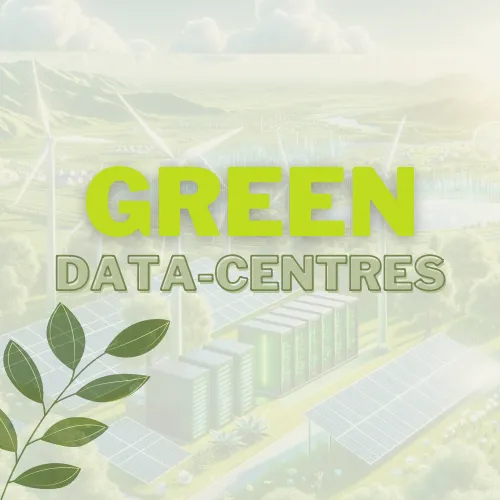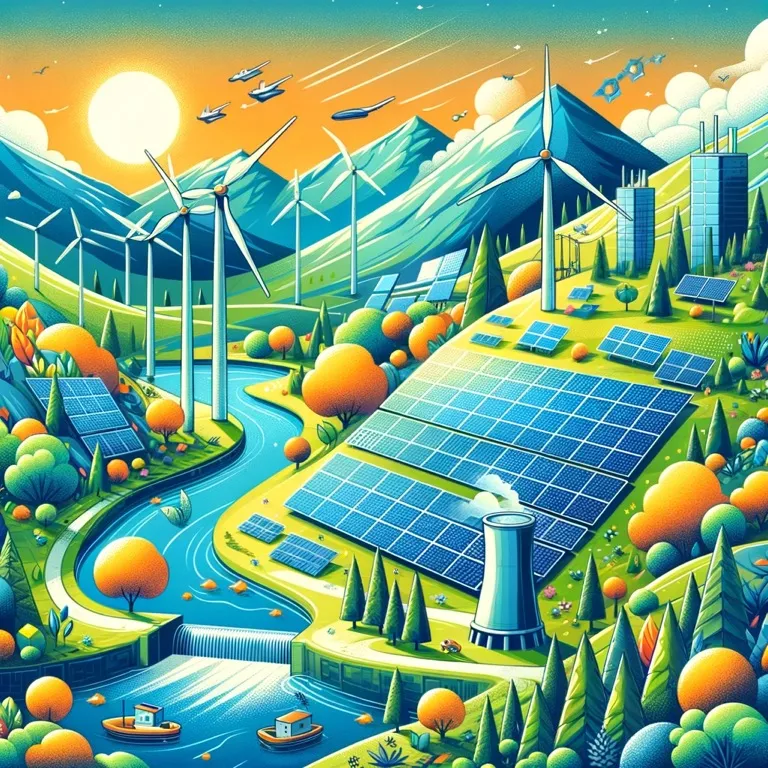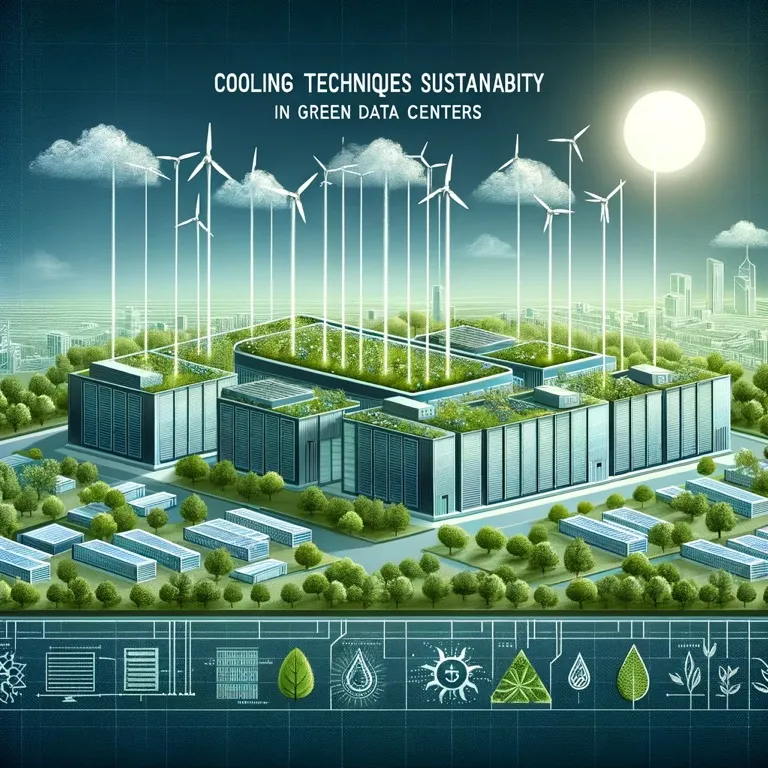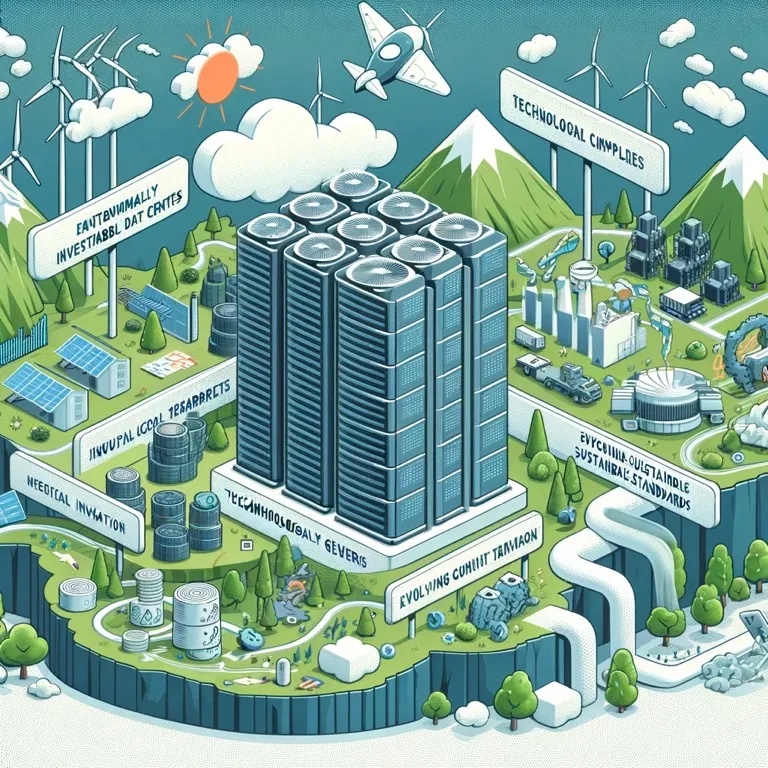The Rise of Green Data Centres in Sustainable Digital Infrastructure
Written By Chinmay Kapoor
Date Posted December 27, 2023

Introduction
Green data centers represent a vital intersection of technology and environmental sustainability, addressing the increasing ecological footprint of digital data storage and management. These innovative facilities are designed to minimize their impact on the environment while maintaining high standards of operational efficiency.
Energy Efficiency
Green data centres prioritize energy efficiency, focusing on optimizing the use of electricity in every aspect of their operation. The Power Usage Effectiveness (PUE) metric is central to this goal. A low PUE indicates that a larger portion of the energy used is going directly towards computing work rather than cooling or other non-computing processes. Advanced data centers strive for a PUE close to 1. This is achieved through various strategies, including more efficient server architectures, using energy-efficient lighting systems, and implementing intelligent power management systems that can adapt energy use to real-time demands.
Carbon Footprint Reduction
The carbon footprint of data centres is a significant concern given their high energy consumption. The Carbon Usage Effectiveness (CUE) metric helps data centers measure and manage their carbon emissions. Achieving a lower CUE involves not just using energy more efficiently, but also sourcing energy from renewable sources such as solar, wind, or hydroelectric power. Additionally, some data centers participate in carbon offset programs to counterbalance their emissions, contributing to projects that reduce carbon dioxide elsewhere, such as reforestation initiatives.

Use of Renewable Energy
Transitioning to renewable energy sources is a key factor in defining a green data centre. Renewable energy, derived from natural processes that are replenished constantly, includes wind, solar, and hydroelectric power. Using these sources reduces reliance on fossil fuels, which are not only harmful to the environment but also subject to market volatility. Green data centers often enter into power purchase agreements (PPAs) with renewable energy providers or invest in on-site renewable energy generation like solar panels or wind turbines.

Sustainable Cooling Techniques
Cooling is one of the most energy-intensive aspects of data centre operations. Green data centres implement innovative cooling strategies to reduce energy consumption. These include free air cooling, which leverages outside air when conditions are favourable, and evaporative cooling, which uses the natural process of water evaporation to cool the air. Other techniques involve using the heat generated by data centers for other purposes, like district heating systems, thereby turning waste into a resource.
Modular Design
Modularity in data centres refers to the concept of creating data centre components in a way that they can be easily scaled or replicated. Modular data centers can be more energy-efficient as they allow for rapid expansion or contraction based on the actual demand. This flexibility ensures that energy isn’t wasted on powering unused infrastructure. These portable, containerized modules can be deployed quickly where needed, reducing the time and resources needed for construction and commissioning.
Reusing Waste Heat
The concept of reusing waste heat is an innovative approach in green data centres. Instead of treating the heat generated by servers as a byproduct to be cooled and expelled, it is captured and redirected for other uses. Examples include heating office spaces or nearby buildings, supplying district heating networks, or even supporting agricultural processes like greenhouse heating. This not only reduces the energy required for heating elsewhere but also enhances the overall energy efficiency of the data center.
Low-Power Servers
Low-power servers are critical in reducing the energy consumption of data centres. These servers, designed to provide the necessary computing power with a lower energy footprint, borrow principles from mobile computing, where energy efficiency is a key concern. They use less power both in operation and cooling, contributing significantly to the overall energy efficiency of the data center. The adoption of these servers is often part of a broader strategy to optimize computing hardware for energy efficiency without compromising performance.
AI and Automation in Green Data Centres
AI and automation are revolutionizing green data centres by improving operational efficiency and reducing energy consumption. AI algorithms can analyze vast amounts of operational data to optimize cooling systems, manage power distribution, and predict maintenance needs. Automation reduces the need for manual intervention in routine tasks, leading to more consistent and efficient operations. Moreover, AI can play a pivotal role in dynamically adjusting data center operations based on real-time data, thus enhancing both energy efficiency and reliability.
Digital Twins and Sustainability
Digital twin technology is becoming increasingly important in the management of green data centres. These virtual replicas of physical data centers enable operators to simulate and analyze the performance of their facilities under various conditions. By using digital twins, data center operators can optimize space utilization, energy consumption, and cooling efficiency. This technology also supports predictive maintenance, helping to prevent downtime and extend the lifespan of equipment. Digital twins, when combined with AI and ML, provide a comprehensive and dynamic tool for sustainable data center management.

Challenges and Future Directions
While green data centres offer a path towards more sustainable digital infrastructures, they face challenges such as higher initial costs and the need for ongoing innovation to keep up with rapidly evolving technology and environmental standards. The investment in green technology, while beneficial in the long run, can be substantial. However, these costs are often offset by long-term savings in energy consumption and operational efficiencies. Moreover, as the global focus on sustainability intensifies, green data centers are likely to benefit from regulatory support and incentives.
Future trends in green data centres may include further integration of renewable energy sources and continued advancements in AI and machine learning to enhance energy efficiency and operational sustainability. There is also a growing emphasis on holistic sustainability, considering not just energy use but also the entire lifecycle of data center components, from manufacturing to disposal.
In addition, advancements in battery technology could play a significant role in the future of green data centers. As battery storage systems become more efficient and cost-effective, they offer a viable solution for storing renewable energy, providing uninterrupted power supply and further reducing reliance on the grid.
Overall, the development of green data centres is a critical component of the global effort to reduce the environmental impact of digital technologies. By adopting innovative technologies and sustainable practices, these facilities are setting new standards for environmental responsibility in the tech sector.

